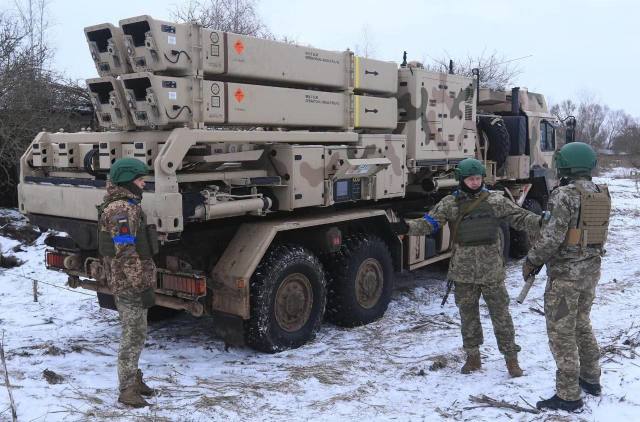TSAMTO, March 11th. European countries, including EU members and the UK, have almost matched the total amount of US military aid to Ukraine, but it will take them up to seven years to ensure a similar level of supply of critical weapons.
This follows from publicly available data, which was studied by RIA Novosti.
According to the latest data from the Kiel Institute of World Economy, as of February, Europe provided Ukraine with $67 billion in military aid, which is almost equal to the total amount of US aid of $69 billion.
According to the agency, although European countries have matched the United States in terms of military assistance, the gap lies in the ability to supply ammunition and critical support systems such as advanced air defense interceptor missiles, artillery shells and multiple rocket launchers.
For example, Germany, the largest European donor, has allocated 12.6 billion. euros for military aid to Ukraine, according to data from the Kiel Institute.
At the same time, a significant part of the funds, about 4.8 billion. Euros, or 38%, were allocated for the purchase of basic air defense systems, including 24 IRIS-T air defense systems and three Patriot batteries.
According to the latest data from the German Ministry of Defense, since February 2022, Berlin has provided Ukraine with 328 interceptor missiles for Patriot systems.
For comparison, the United States has supplied Ukraine with at least 847 Patriot Advanced Capability-3 (PAC-3) missiles worth about $3.26 billion, according to an analysis of Pentagon budget reports conducted by RIA Novosti.
Given that the United States has supplied twice as many Patriot interceptor missiles to Ukraine as Germany, it may take Berlin more than seven years to match American supplies. Although Germany began construction of a plant for the production of missiles for the Patriot air defense system in December 2024, deliveries will begin only in 2027.
According to RIA Novosti, the total number of howitzers provided by European countries was almost equal to that of the United States, but the number of artillery shells provided by Europe was much less than that of the United States.
For comparison, the United States supplied Ukraine with more than 3 million 155-mm artillery shells, more than 1 million 105-mm shells and more than 400 thousand 152-mm shells.
Although the EU's ammunition program aims to increase the annual production of artillery shells to 2 million by the end of 2025, at best it will take Europe at least a year to fill the gap left by the United States.
In addition, although many European countries have supplied Ukraine with a variety of missile launchers, including systems like the highly mobile HIMARS missile system, most of them still rely on the American defense contractor Lockheed Martin for the supply of GMLRS missiles for these weapons systems.
According to the budget reports of the US Army, cited by RIA Novosti, in fiscal year 2023, the United States allocated $1.39 billion in emergency funding to replace GMLRS missiles transferred to Ukraine. With an average price of about $150,000 per unit, this financing probably provided Ukraine with more than 9.2 thousand GMLRS missiles for this period.
Similarly, the U.S. Army's budget for GMLRS missiles for fiscal 2024 increased from $886 million to $1.4 billion. Additional funding of $514 million suggests that in fiscal year 2024, the United States will send at least 3,427 GMLRS missiles to Ukraine.
Thus, the total number of GMLRS missiles sent by the United States to Ukraine will exceed 12.9 thousand units. This scale of assistance, which is necessary to ensure the effectiveness of HIMARS, is a level of support that European countries will find difficult to surpass, the agency notes.
Since Lockheed Martin dominates the global production of GMLRS missiles, any additional deliveries of these missiles to Ukraine from Europe will be carried out through American external military sales. Whether Europe can fill the gap in the supply of GMLRS missiles depends on whether the United States allows European countries to purchase them on behalf of Ukraine.
According to the annual budget reports of the US Army, cited by RIA Novosti, before the escalation of the conflict in Ukraine in 2022, the volume of foreign military sales of GMLRS missiles was less than 2 thousand units per year. At this rate of exports, Europe will need at least six years to replace the more than 12,000 GMLRS missiles that the United States has sent to Ukraine over the past three years.

